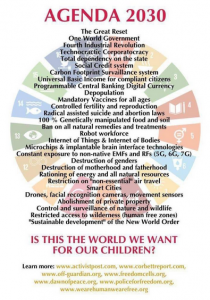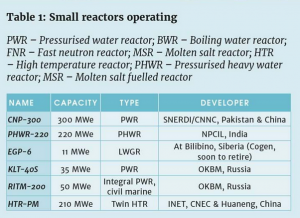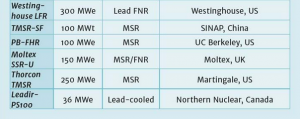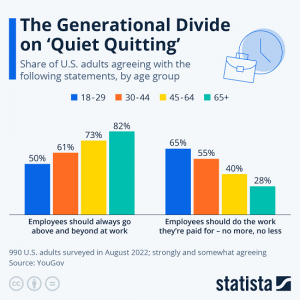In his “Time has run out” speech, then Prince Charles laid out a roadmap to enslave all of humanity. To understand their desire to monetize “carbon,” you must realize that all life as we know it is so-called carbon-based, especially you. In calling for enterprises to have a system by which to value carbon, what they are doing is enslaving you to corporate masters. You have a monetary value placed upon your work for their common good.
We could easily argue that this is fascism but indeed, the powers that be are communistic. History books will one day reflect that a new brand of totalitarianism was created out of the climate cult in the 21st century.
If you don’t function to serve one of the major global companies to their desired benefit, you must be eliminated. No old people can be allowed, no rebels, no independents, and limited new births of only the mental and physical characteristics desired to fulfill the needs of the plantation owners. Some of these items are from the Nazi program of eugenics that the communists will weave into their global collective.
The drive to zero-based wages is this: to pay you just enough to keep you from being free while ever tightening the physical and intellectual distance you are allowed to travel. In short, it’s a global, corporate-run slave plantation. Live in the pod, eat your bugs, and lights out at ten. Missing too much work or desiring a better life gets you fired; no job, no income, and no way to survive or move about. Social credit is simply a way to keep compliance by weeding out the uppity types like you.
Money is the reason King Chuck III and his pals need the corporations on board. The corporations control the money. Don’t be confused; they don’t own the global money supply and in no way run the banking cartel; quite the opposite is true. No, the large firms control how much money you get; they control you by the money, and the appetite of the globalists is to leverage all you do for their profit and your compliance.
This is what King Chuck is actually saying, between the lines, to his pals. And now you know. This is agenda 2030 or whatever they’re calling it today. It appears increasingly so that the Covid-19 hoax was a submission test. Either way, they have results that educate to that end. I’d say they know what they have, don’t have, and how they’ll proceed from here. But remember, we learned some things too, and in the US, at least, we still have one box left to stand upon.
It’s not wise to expect too much from the most prominent global businesses in the way of pushback. With the stroke of a pen, whole industries can be eliminated. Some on wall street, and probably the majority, don’t want what the globalists have planned. There is some resistance to ESG (Environmental, Social, Governance). The “sustainability and ethical impact” that establishments thought was good is not a money maker because it makes them less competitive. On top of these policies having no financial value, now Wall Street is realizing that most people don’t want corporate social agendas.
People want to belong to something bigger than themselves. This othering that’s been going on will lead to war. ESG is only othering by a fancy new title; it’s bullying.
The interest-free cash dump of money to Wall Street enticed them into ESG. Money was free, times were good, and buying back their own stock while pretending to make real profits was easy. That’s all ending. Now they see ESG as a liability. But they fell for Bankers at every turn since FDR. We hold little hope for actual “corporate excellence” to replace ESG. They shipped all the manufacturing overseas for “shareholder value.” What happened to American excellence and American value?
The mercantilist business class that are the nuts and bolts of Wall Street are good folks who support America First, and many of them have been raving against the Fed and easy money for years or decades. They’ve seen all this coming. Those guys and gals are not the communist chattering classes New York City is famous for. NYC has its balkanization problems and not just ethnicity.
If the globalists had cared about the environment, they would have left the West as the industrial base of the world and let the third world be. The government lied then and is lying now. CEOs and would-be moguls at the direction of global banking and self-proclaimed government elites wanted cheap labor while keeping prices flat, to maximize profits wrecking your children’s future.
People want good and interesting jobs with future prospects of clever inventions and better quality of life. Men have tasted the opportunity technology has afforded, especially the option of leisure time.
They need you to have taken to the good life so thoroughly that you refuse to leave leisure and quality of life, get hard, and fight back by forsaking all for future generations. Humans, and all life, take the path of least resistance. But that direct course for us leads to the allotted daily portion of bug meal protein while you’re stuffed into a pod, provided you’re still able to get up in the morning and work until you drop.
“He that walketh with wise men shall be wise: but a companion of fools shall be destroyed. Evil pursueth sinners: but to the righteous good shall be repayed.” – Proverbs 13:20-21
Your plan must include a spiritual aspect. You want wisdom, the proverb says; make the wise your friend. If you seek to have faith that we’ll win, take up with the faithful. If you want righteousness, turn unto God, for He is the only righteous and wise King.
Ninety percent of the people in the world will follow the power, and strength of character is what’s lacking most today. We must prove ourselves strong, determined to win, and steadfast in the knowledge that sinners will be overtaken by their evil; God repays the righteous with good. Every month eliminate one corrupt evil from your life; tv, toxic “friends,” pornography, cussing, lying, stealing, cheating, drug and alcohol abuse, wasting time, etc. (There are many ways we steal and cheat, and boy, is time wasting a problem these days.) This is just as important, as the Bible says, perhaps more important than physical training and preparation.
“And unto man he said, Behold, the fear of the Lord, that is wisdom; and to depart from evil is understanding.” – Job 28:28
The wicked are a dime a dozen; be someone worth knowing, worth fighting beside, worth following.














